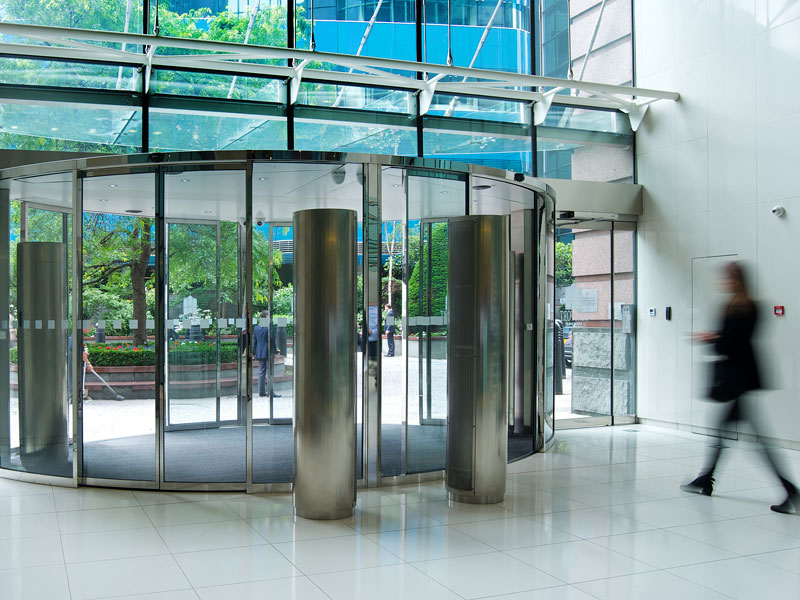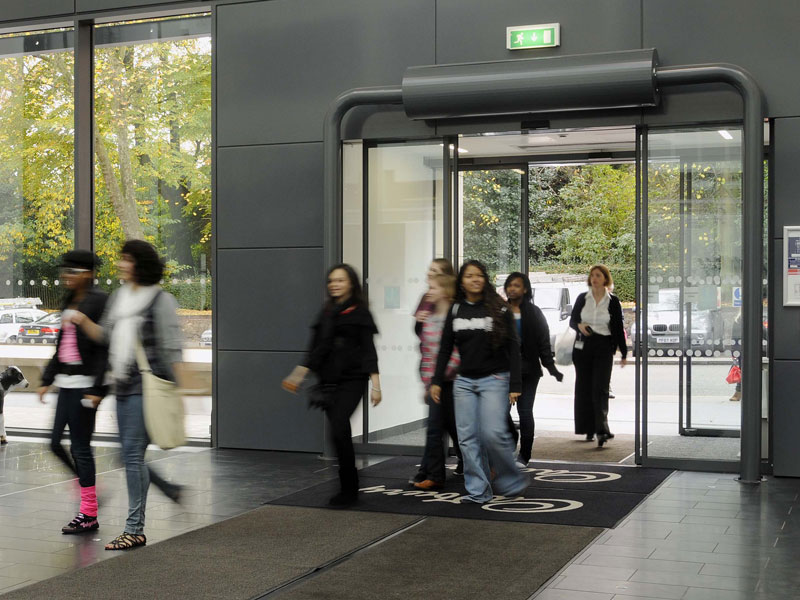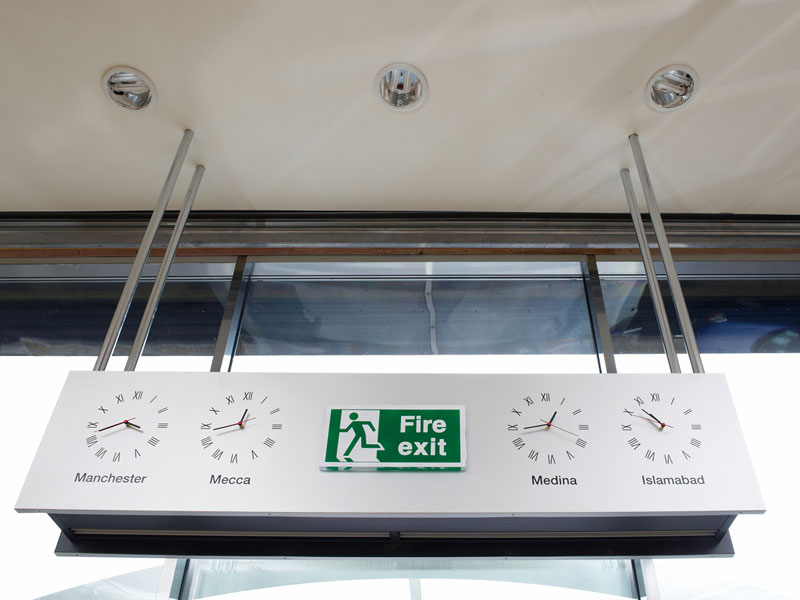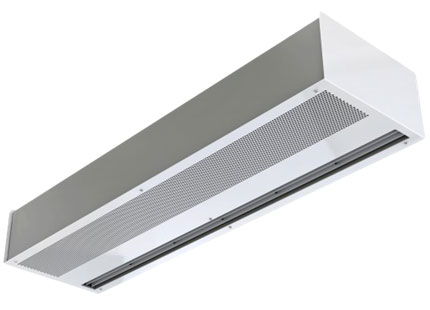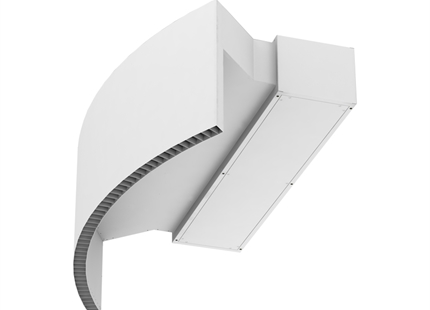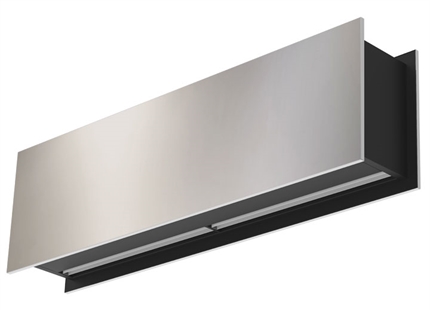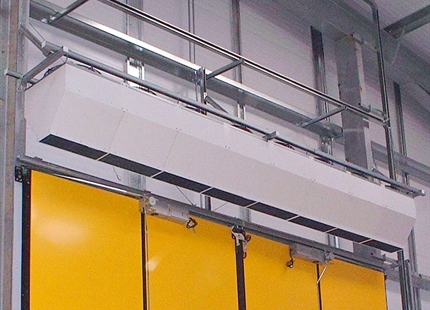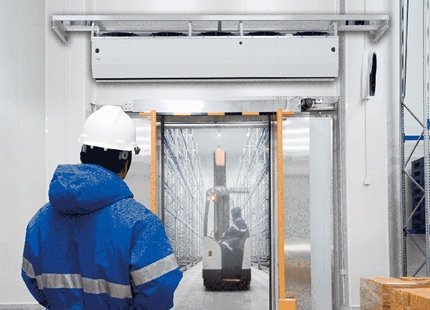
Author: Graeme Mansfield, Sales Manager, JS Air Curtains
Best practise in air curtain specification
Air curtains create an invisible barrier of air that separates two thermal zones. They are often used on shops, offices and other public doorways but can be used in industrial situations, like warehouses or factories, and also on cold stores. They can reduce the energy consumption of heating and cooling systems as well as making an environment more comfortable.
Designs and performance vary greatly and ensuring the correct air curtain is used for a specific application depends on many variables.
Sizing
An open doorway without an air curtain will experience a flow of heavy cold air at the bottom from the cold to the warm side and a flow of light warm air at the top from the warm to cold side. An air curtain must be powerful enough to create a seal that resists this air pressure and substantially reduces the flow of air.
Under normal conditions an external door that is 2.2m high will need an air curtain that provides around 1,300m³/h of air per metre of doorway. At this output two temperature zones on either side of the door will be successfully separated. For doorways that are exposed to particularly windy conditions or are subject to negative or positive pressures from within the building, an increase in output will be required.
The most common error in air curtain installations is the use of an under powered air curtain that doesn’t provide enough air volume. However, if an air curtain is oversized and provides air at an excessive volume, the turbulence created at the bottom of the doorway can have a negative effect and promote thermal transfer through the entrance rather than reduce it.
Glass fascia or other structural elements could make vertical installation at the side of the door a better option
Creating a seal
The length of an air curtain ought to slightly overlap the width of the doorway (when mounted above) in order to minimise air leakage at the edges. If it is too small, irrespective of the air velocity it produces, it will not provide an effective barrier.
It is also important that the air curtain is located as close to the door opening as possible. An air curtain that is located at a distance from the doorway will allow air leakage around the edges of the barrier it creates, reducing any benefit.
Most air curtains have adjustable outlet vanes that enable the air flow to be directed at a certain angle for the best possible seal. The optimum angle for the flow of air is slightly into the colder side irrespective of whether the application is protecting a heated or chilled environment. When the air flow hits the ground it will split, with the majority returning inside the warmer area due to the pressure created by the heavier cold air.
Mounting position
Air curtains can be positioned horizontally above a door or vertically to the side. The choice is often purely an aesthetic one but other factors can play a role. A lack of space above a doorway, a very high ceiling, glass fascia or other structural elements could make vertical installation at the side of the door a better option.
The possibility of collision with the air curtain, a lack of available floor space or a very wide doorway would require a horizontally mounted air curtain above the door.
It is often possible to overcome initial difficulties in positioning an air curtain through innovative design. A high ceiling can still accommodate a horizontally suspended air curtain with a long, attractive support column. Alternatively goalpost type legs can be used so that a horizontally positioned unit is suspended above a doorway but independently supported from the ground.
Heating
Air curtains can be heated with electric elements, low pressure hot water or steam. Air curtains maintaining a chilled environment, such as a cold store, are employed without heating. Some warehouse doorways that are very high employ a vertically stacked combination of heated units at the bottom and unheated units on top.
In the summertime air curtains can be used without the heater to provide an ambient air seal and keep in air conditioning. It can be tempting to use this approach in the winter to keep out cold air, as it reduces the energy consumption of the air curtain system. However, heated units will improve the comfort level inside a room. Before specifying an unheated system, consider what the acceptable temperature is internally and whether there is an additional heat source.
Control strategy
Selecting the correct control strategy is essential to prevent under or overheating and reduce energy consumption. The basic control option is manual on/off with fan speed and heater level control. In addition room thermostats can be used to control the heat output and door switches to adjust fan and heater settings when the door is open or closed. A combination of room thermostat and door switch can provide an appropriate level of heating and air velocity only when required and minimise energy consumption.
Intelligent control options are also available that incorporate external and internal temperature sensors and adjust the air curtain’s output depending on the difference between the two conditions. Other control features include delayed timer run-on, and all control options can be operated from a BMS.
Other services
Modern air curtains don’t just create an air barrier. Some can incorporate other services like lighting, aroma diffusers or CCTV. Signage and branding can also be carried on fascia panels and other design elements such as clocks or digital displays.
Back to the Learning Centre

